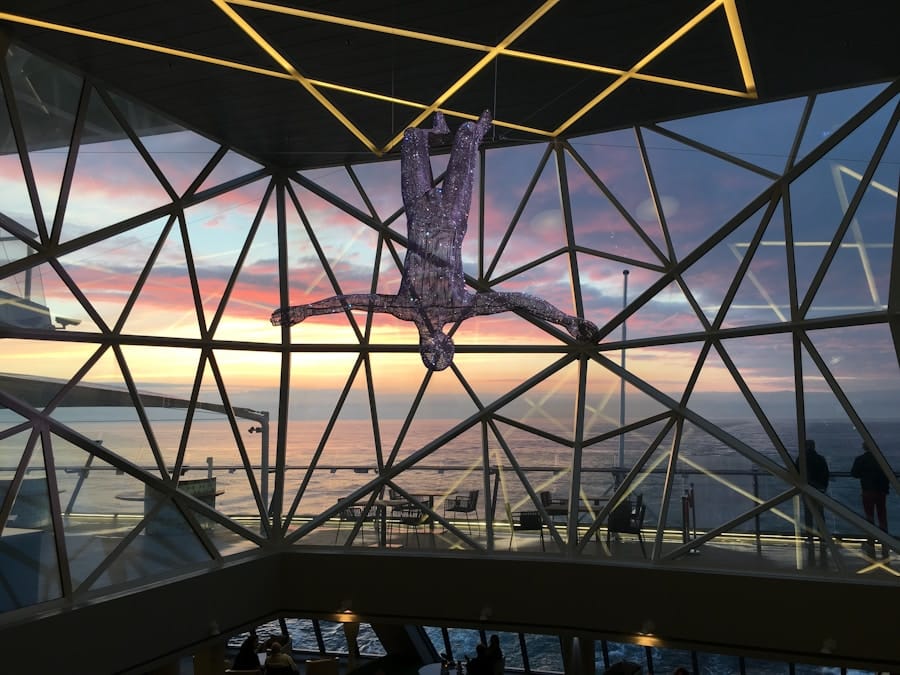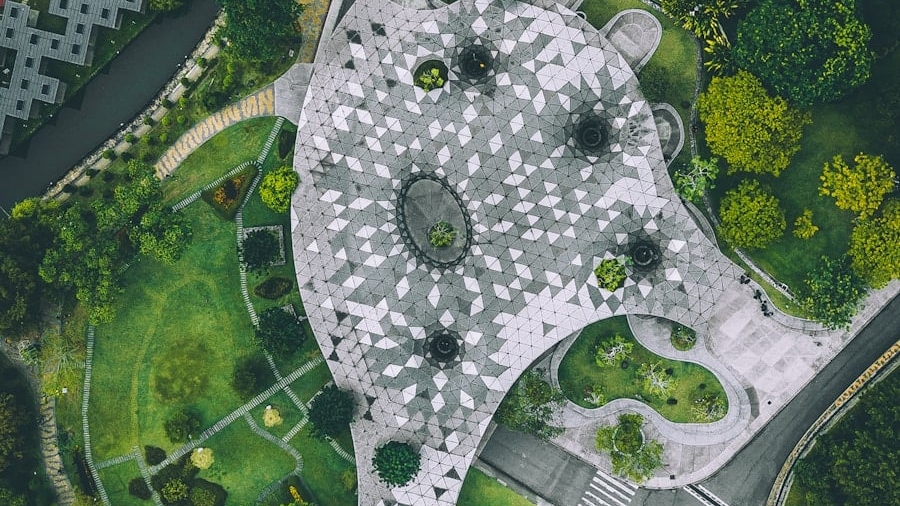The concept of constructing habitats in space has transitioned from the realm of science fiction into a tangible area of research and development, particularly with the advent of artificial intelligence (AI). As humanity sets its sights on long-term habitation beyond Earth, the integration of AI into space construction processes presents a revolutionary approach to overcoming the myriad challenges associated with building in extraterrestrial environments. AI-powered systems can analyze vast amounts of data, optimize resource allocation, and automate construction tasks, thereby enhancing efficiency and safety in the harsh conditions of space.
The potential for AI in space construction is vast, encompassing everything from the design of habitats to the management of construction robots. By leveraging machine learning algorithms and advanced robotics, AI can facilitate the creation of sustainable living environments on the Moon, Mars, and beyond. This integration not only promises to streamline construction processes but also aims to ensure that these habitats are resilient and adaptable to the unique challenges posed by their extraterrestrial locations.
As we delve deeper into this topic, it becomes evident that AI is not merely a tool but a transformative force that could redefine how we approach space colonization.
Key Takeaways
- AI-powered space construction is revolutionizing the way we build habitats in space, making it more efficient and cost-effective.
- Current challenges in space habitat development include limited resources, high costs, and the need for advanced technology to support human life in space.
- Advancements in AI technology, such as machine learning and autonomous robotics, are enabling more precise and autonomous construction processes in space.
- Potential benefits of AI-powered space construction include faster construction times, reduced human risk, and the ability to adapt to changing environmental conditions in space.
- Ethical and environmental considerations in AI-powered space construction include the impact on space debris, the need for sustainable construction materials, and the ethical use of AI in space exploration.
Current Challenges and Limitations in Space Habitat Development
Despite the excitement surrounding space habitat development, several significant challenges hinder progress. One of the foremost issues is the harsh environmental conditions found in space. Factors such as extreme temperatures, radiation exposure, and microgravity create a hostile environment for both human inhabitants and construction materials.
For instance, on Mars, temperatures can plummet to minus 80 degrees Fahrenheit at night, while radiation levels are significantly higher than on Earth due to the thin atmosphere. These conditions necessitate innovative solutions that can withstand such extremes while providing a safe living environment. Another critical challenge is the logistical complexity of transporting materials and equipment to space.
Current rocket technology limits the amount of cargo that can be sent beyond Earth’s atmosphere, making it difficult to deliver the necessary resources for constructing habitats. This limitation raises questions about how to utilize local materials effectively, a concept known as in-situ resource utilization (ISRU). However, developing ISRU technologies is still in its infancy, and significant research is needed to determine how materials found on celestial bodies can be processed and used for construction purposes.
The combination of environmental challenges and logistical constraints underscores the need for advanced technologies, such as AI, to devise innovative solutions for these pressing issues.
Advancements in AI Technology for Space Construction

Recent advancements in AI technology have opened new avenues for addressing the challenges of space construction. Machine learning algorithms have become increasingly sophisticated, enabling systems to analyze complex datasets and make informed decisions in real-time. For example, AI can be employed to simulate various construction scenarios based on different environmental conditions, allowing engineers to identify optimal designs and construction methods before any physical work begins.
This predictive capability can significantly reduce trial-and-error approaches that are costly and time-consuming. Moreover, robotics has seen remarkable progress, with autonomous systems capable of performing intricate tasks without direct human intervention. In the context of space construction, robotic systems equipped with AI can undertake tasks such as assembling structures, conducting repairs, and even performing maintenance on habitats.
NASA’s recent experiments with autonomous robots on the International Space Station (ISS) have demonstrated the feasibility of using AI-driven machines for routine tasks, freeing astronauts to focus on more complex operations. These advancements not only enhance efficiency but also improve safety by minimizing human exposure to hazardous conditions.
Potential Benefits of AI-Powered Space Construction
The integration of AI into space construction processes offers numerous benefits that extend beyond mere efficiency gains. One significant advantage is the potential for cost reduction. By automating various aspects of construction and optimizing resource utilization, AI can help lower the overall expenses associated with building habitats in space.
This cost-effectiveness is crucial for long-term missions where budgets are often constrained and resources must be managed judiciously. Additionally, AI-powered systems can enhance the adaptability of space habitats.
For instance, if a habitat experiences unexpected temperature fluctuations or increased radiation levels, AI systems can analyze data from sensors embedded within the structure and recommend modifications to improve safety and comfort for inhabitants. This level of adaptability is essential for ensuring that habitats remain viable over extended periods in unpredictable environments.
Ethical and Environmental Considerations in AI-Powered Space Construction
As with any technological advancement, the deployment of AI in space construction raises important ethical and environmental considerations. One primary concern is the potential impact on extraterrestrial ecosystems. While celestial bodies like Mars may appear barren, there is ongoing debate about whether they harbor microbial life or other forms of biological activity.
The introduction of human-made structures could disrupt these ecosystems or lead to contamination. Therefore, it is imperative that any construction efforts are guided by strict ethical frameworks that prioritize planetary protection. Furthermore, the environmental footprint of space construction must be carefully evaluated.
The production and launch of rockets contribute significantly to carbon emissions and other pollutants. As we explore options for building habitats off-planet, it is essential to consider sustainable practices that minimize harm to both Earth’s environment and those of other celestial bodies. This includes developing technologies that utilize renewable energy sources and recyclable materials wherever possible.
The ethical implications of our actions in space must be at the forefront of discussions surrounding AI-powered construction initiatives.
Collaborative Efforts in AI-Powered Space Construction

Partnerships and Collaborations
For instance, NASA has partnered with private aerospace companies like SpaceX and Blue Origin to leverage their expertise in rocket technology while focusing on habitat design and construction. This collaboration enables the sharing of resources, expertise, and risk, ultimately accelerating the development of space habitats.
Interdisciplinary Approaches
Moreover, interdisciplinary collaboration is vital for integrating diverse perspectives into the development process. Engineers, computer scientists, architects, and environmental scientists must work together to create holistic solutions that address both technical challenges and ethical considerations.
Global Initiatives
Initiatives such as the European Space Agency’s (ESA) Moon Village concept exemplify this collaborative spirit by inviting contributions from various stakeholders worldwide to envision a sustainable human presence on the Moon. This global approach ensures that the development of space habitats is a collective effort, benefiting from diverse expertise and perspectives.
Future Opportunities and Applications of AI-Powered Space Construction
Looking ahead, the future opportunities for AI-powered space construction are vast and varied. One promising application lies in the development of modular habitats that can be easily assembled using robotic systems guided by AI algorithms. These modular units could be transported separately and then combined on-site to create larger living spaces tailored to specific mission requirements.
Such flexibility would allow for rapid expansion as more resources become available or as mission objectives evolve. Additionally, AI could play a crucial role in monitoring habitat conditions over time. By utilizing sensors embedded within structures, AI systems can continuously assess factors such as air quality, temperature fluctuations, and structural integrity.
This data-driven approach would enable proactive maintenance strategies that address potential issues before they escalate into significant problems. Furthermore, as we explore deeper into our solar system or even beyond, AI could assist in scouting locations for future habitats by analyzing terrain data from orbiters or rovers.
The Outlook for AI-Powered Space Construction and Habitat Development
The integration of artificial intelligence into space construction represents a paradigm shift in how humanity approaches extraterrestrial habitation. While significant challenges remain—ranging from environmental concerns to logistical hurdles—the advancements in AI technology provide promising pathways toward overcoming these obstacles. As collaborative efforts continue to grow among various stakeholders in this field, we can expect innovative solutions that not only enhance our ability to build habitats in space but also ensure that these endeavors are conducted ethically and sustainably.
From creating adaptable habitats that respond dynamically to their environments to fostering international cooperation in our quest for knowledge beyond Earth, the future looks bright for those who dare to dream about life among the stars. The journey toward establishing a human presence beyond our planet is fraught with challenges; however, with AI as a guiding force, we may soon find ourselves taking significant strides toward making those dreams a reality.
If you are interested in futuristic technology and innovation, you may also enjoy reading about how to choose the right iPhone for you in 2023. This article explores the latest advancements in smartphone technology and provides tips on selecting the best device to suit your needs. Just as AI-powered space construction is pushing the boundaries of what is possible in outer space, the evolution of smartphones is constantly redefining how we communicate and interact with technology in our daily lives.
FAQs
What is AI-powered space construction and habitat development?
AI-powered space construction and habitat development refers to the use of artificial intelligence (AI) technology to design, build, and maintain structures and habitats in outer space. This technology aims to enable the construction of sustainable living environments for humans in space, such as space stations, lunar bases, and Mars colonies.
How does AI contribute to space construction and habitat development?
AI contributes to space construction and habitat development by automating various tasks involved in the design, construction, and maintenance of space structures. It can analyze complex data, optimize designs, and operate robotic systems to efficiently build and maintain space habitats.
What are the potential benefits of AI-powered space construction and habitat development?
The potential benefits of AI-powered space construction and habitat development include reduced construction costs, increased construction speed, improved safety for astronauts, and the ability to create sustainable and resilient living environments in space.
What are some challenges associated with AI-powered space construction and habitat development?
Challenges associated with AI-powered space construction and habitat development include the need to develop AI systems capable of operating in the harsh conditions of space, ensuring the reliability and safety of AI-controlled construction processes, and addressing ethical and legal considerations related to AI use in space.
What are some current developments in AI-powered space construction and habitat development?
Current developments in AI-powered space construction and habitat development include the use of AI for designing and 3D printing space structures, the development of autonomous construction robots for space missions, and the exploration of AI-driven maintenance and repair systems for space habitats.

